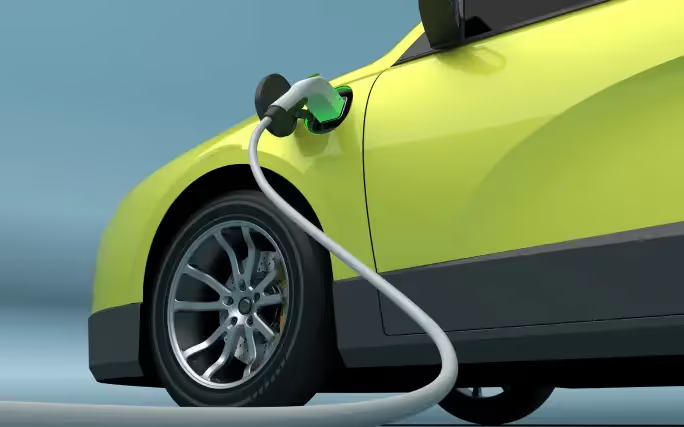How Laboratories and Industry Are Shaping the Future Together
European industry is undergoing a historic transformation: The EU’s Green Deal pursues the ambitious goal of making Europe climate-neutral by 2050 — while safeguarding its economic competitiveness.A key lever on this path is the development of sustainable materials. But how can innovation speed, resource efficiency, and regulatory requirements be harmonized? The answer lies in the intelligent handling of data — and a new generation of digital tools: AI agents based on Material Intelligence.
What is the European Green Deal?
The European Green Deal is the central climate protection and growth strategy of the European Union.Its overarching goal: to make Europe the first climate-neutral continent by 2050. This means that no net greenhouse gases will be emitted — requiring profound changes across all sectors.
Specifically, the Green Deal includes:
• a reduction in greenhouse gases of at least 55% by 2030 (compared to 1990)
• investments in clean energy, sustainable industry, climate-friendly mobility, circular economy and building efficiency,
• clear guidelines for sustainable agriculture (“farm to fork”) and resource conservation,
• and the promotion of innovations that link climate goals and economic competitiveness.
One key finding: Material innovations are essential technologies. According to an analysis by Fraunhofer LBF, about 70% of all industrial innovations depend on new or improved materials. This view is also supported by the detailed position paper “Materials for the European Green Deal” published by Technologieland Hessen on behalf of the Hessian Ministry of Economics. It highlights how companies and research institutions in Hesse are already developing solutions for climate protection and competitiveness — with a strong focus on materials, digitalization, and connected innovation.
Digitalization as an enabler: Material Data at the Core
Industrial research and quality assurance are required today to make decisions faster, more well-founded and more proactively. Instead of relying on lengthy test series, data is increasingly becoming a crucial resource.
Many laboratories still work with scattered Excel sheets, incompatible standalone systems, or unstructured databases — leaving enormous potential untapped, both ecologically and economically.
However, many laboratories still work with scattered Excel sheets, incompatible standalone systems, or unstructured databases — leaving enormous potential untapped, both ecologically and economically. This is where the concept of Material Intelligence comes into play: the ability to collect, structure, and link relevant material data, and to turn it into actionable insights through AI-driven analyses.
Smart Assistance: AI Agents as Part of Material Intelligence
In addition to traditional databases and analysis tools, smart assistant systems are increasingly being deployed. AI agents can access existing material data, recognize patterns, make predictions, and develop targeted recommendations.
“AI agents work proactively toward achieving a goal — not just reactively answering commands,” explains Charles Jouanique, Chief Revenue Officer at LabV.
In a modern Material Intelligence platform like LabV, AI-powered modules, for example, analyze historical test results and suggest possible formulation improvements or alternative raw material combinations. “They help researchers and quality engineers make better decisions faster — without replacing human expertise,” adds Jouanique. This intelligent support becomes a decisive success factor, particularly in areas such as product development, recycling strategies, and material certification.

Practical examples: Material data for the Green Deal
As innovative approaches from industry and research show, structured material data is increasingly becoming the heart of sustainable developments. The following examples illustrate how digitalization and Material Intelligence are contributing to the practical implementation of the European Green Deal:
Example 1: Low-CO2 building materials and recycled concrete
A project from Hesse shows how material data actually contribute to reducing CO₂ emissions. Companies such as Heidelberg Materials work on climate-friendly building materials, for example through the use of recycled concrete and alternative binders. The aim is to significantly improve the CO₂ balance of buildings.
Structured material data is essential here:
Raw material compositions, process parameters and performance data are digitally recorded and analyzed to ensure both quality and sustainability. Digital platforms make it possible to optimize recipes and transparently track building material flows. AI agents could help recommend the optimal mix based on available recyclates and strength, durability and life cycle assessment requirements.
Example 2: Digital product passports for battery materials
Another Hessian project in the context of the Green Deal involves the introduction of digital product passports for battery materials, supported by initiatives such as the Global Battery Alliance. The aim is to make information on raw materials, recyclability and environmental balance available digitally over the entire life cycle.
Material intelligence plays a decisive role here: The data is not only stored, but also intelligently linked and analyzed to generate information on second-life use, recycling strategies or regulatory requirements, for example. Digital product passports enable transparent tracking and documentation along the entire value chain — an essential building block for the circular economy of the future.

Example 3: Research project on smart coatings and digital twins
Even in application-oriented research, material data and AI are increasingly being combined to develop more sustainable solutions. One exciting example comes from the area of intelligent coatings (smart coatings). The Fraunhofer Institute for Material and Beam Technology IWS is researching how to develop intelligent protective layers with embedded sensor functions — for example for self-healing, temperature monitoring or early damage detection.
These novel coatings are not only functional, but also highly complex: Even the slightest changes in raw material parameters or the application process can influence their effect. In order to develop efficiently and in a targeted manner, the combination of material intelligence platforms and digital twins is used.
A digital twin of the coating — i.e. a data-based image of all process, structural and performance parameters — allows potential recipes to be tested virtually before real experiments are carried out. AI agents help identify parameter combinations with a high probability of success. This not only saves time, but also reduces the use of raw materials and energy consumption — two decisive levers in the spirit of the Green Deal. “Sustainability starts with the right data strategy — and ends with comprehensible decisions,” says the BMBF's MaterialDigital research initiative.
Example 4: More efficient paint development with material intelligence
The position paper from Technologieland Hessen clarifies: Material technologies are not just technical solutions — they are carriers of transformation. Whether it's CO₂-free chemistry, new storage materials, smart grids or sustainable construction products — innovations arise where data, material knowledge and digitization come together.

“The transformation of industry can only be achieved if digitization and sustainability are combined — and material data is the common language,” is a central conclusion of the initiative. He continues: “A large part of the solutions is created where companies, start-ups and research jointly use data to develop better materials. ”
The European Green Deal requires not only technological innovations, but also digital traceability — from the origin of raw materials to recyclability. Without central, structured material data, life cycle analyses, digital product passports or automated sustainability assessments are impossible.
The good news is that the technology is there — and the barriers to entry are lower today than ever before. The agent makes suggestions — the responsibility remains with people.
Requirements for a successful start
The good news is that the technology is there — and the barriers to entry are lower today than ever before.
What is needed:
• A central, structured database (e.g. in a platform such as LabV)
• Clear target definitions for the agent (“Find a suitable formula under X”)
• Feedback mechanisms for continuous improvement
• And: the awareness that people always make the last decision
“The agent makes suggestions — the responsibility remains with people,” says Charles Jouanique.
“A well-chosen pilot use case — for example in recipe development or recycling evaluation — is often sufficient to make the benefits tangible.” It is important not just to talk about AI — but to start.
Conclusion: Whoever acts now shapes change
The Green Deal is not just a regulatory framework — it is a call for innovation. Anyone who makes their material data available digitally today, uses AI agents wisely and sees material intelligence as a strategic element will be more efficient, sustainable and competitive tomorrow. “The question is no longer whether AI agents are coming — but how quickly companies can use them sensibly,” summarizes Stroh. The examples from the white paper Materials for the European Green Deal show: Data-based material knowledge becomes a competitive advantage. Now is the right time to take the first step — for better materials, more efficient processes and a sustainable future.
